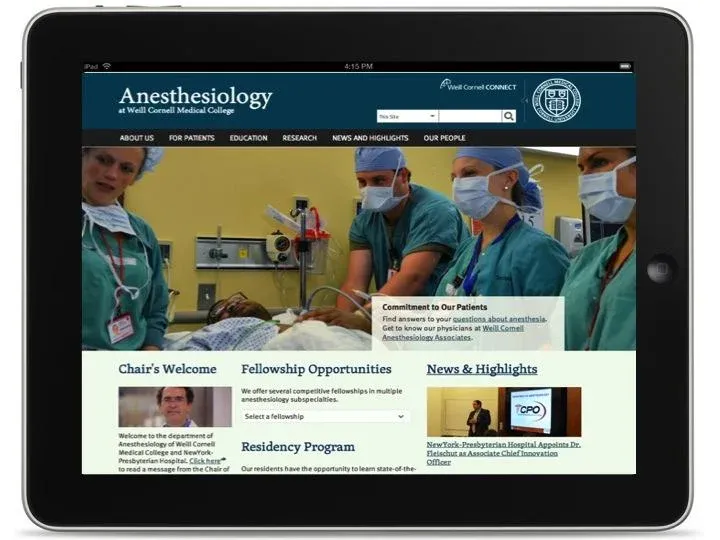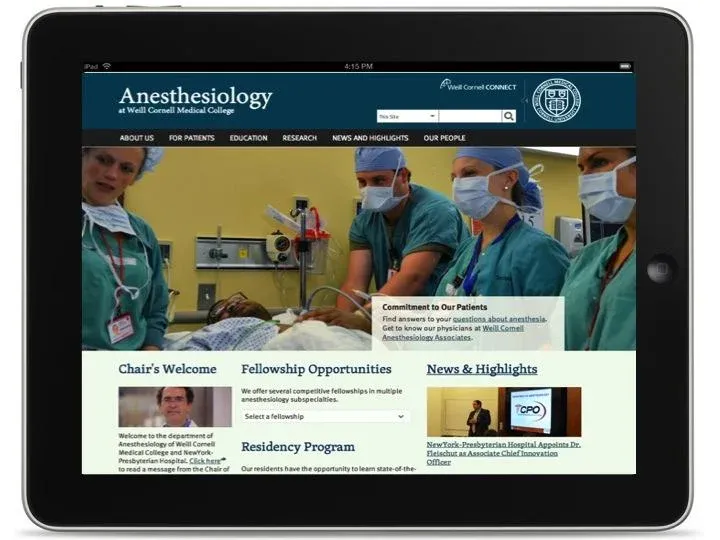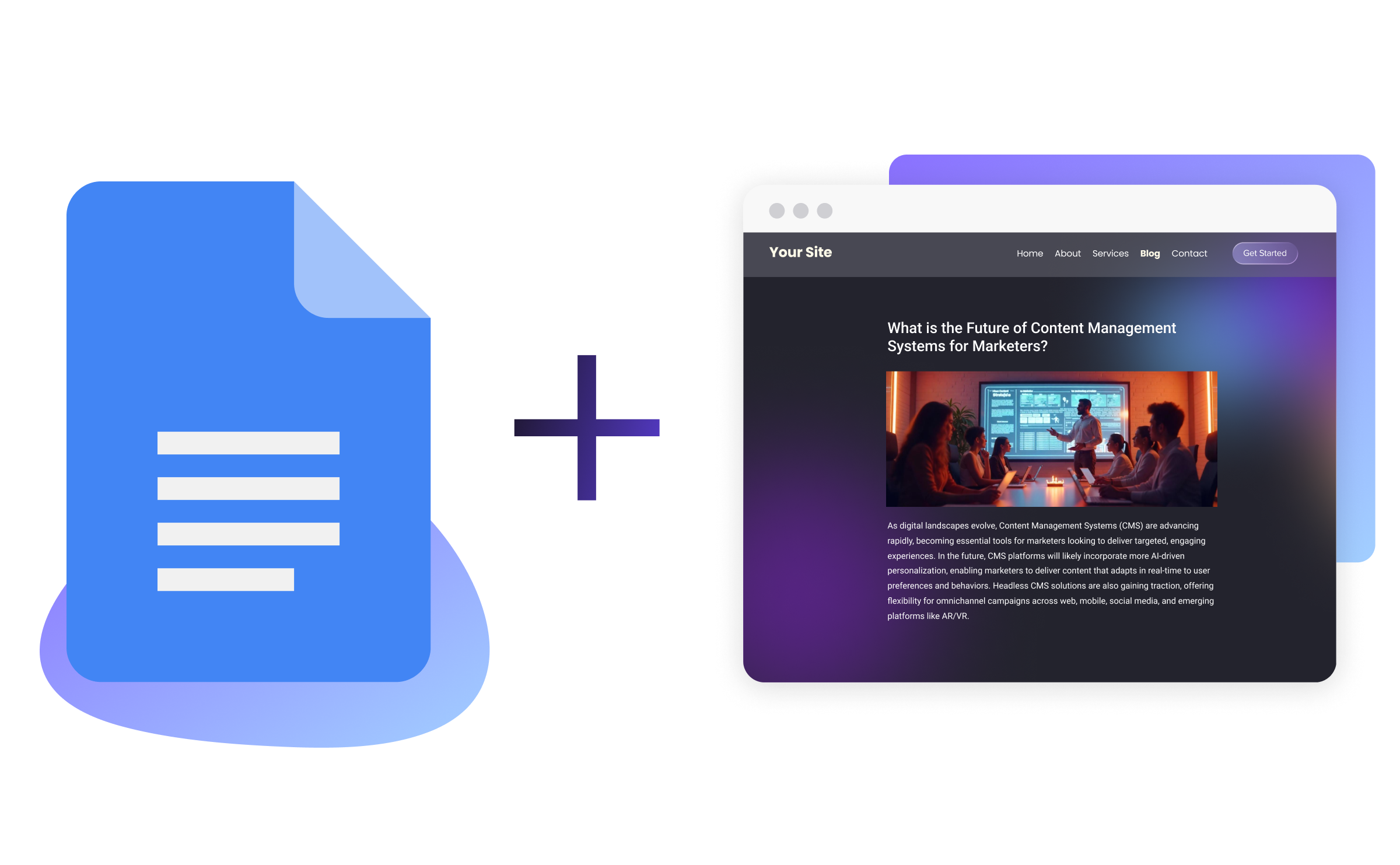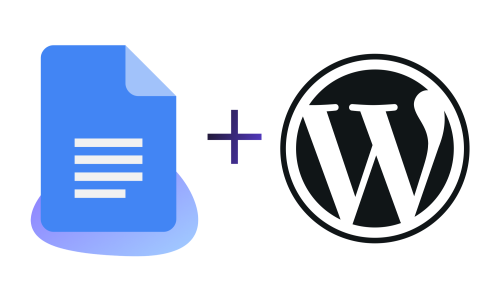How Weill Cornell Medical College Built a Dream Distribution with Pantheon
Image

At Weill Cornell Medical College, Dan Dickinson manages a 12-person Web Communications team that designs and develops organizational websites for medical education, research, and patient care. Read how his team is rescuing 100+ websites from design anarchy—by setting out to build the best Drupal distribution in higher education.
DIAGNOSIS? AN ADVANCED CASE OF DIGITAL SPRAWL
1. 100+ static websites running on various platforms.
We had approximately 100 virtual hosts on our production web cluster. Decisions over the years had gotten us an enterprise CMS (too big!) and some lighter-weight CMSes (too small!). The departments who did want to rebuild their sites were having their options limited by a need to maintain support for sites that hadn’t been touched in years.
2. Need consistent user experiences and designs, STAT.
Having a consistent user experience is as important to us as whether or not the official university colors get worked into the design. The buttons should work the same. The calls to action should be in the same place. The most common actions should be easy to find. But because there weren’t any real boundaries for creating new sites, there was a wide array of look-and-feel, branding, and other functional issues. We knew we needed a better content management strategy.
3. A differently-shaped site for every department.
Even though we’re one institution, every department can have a unique focus. One site might focus exclusively on donors. Another focuses on prospective students. Still others focus on existing students, research fellows, or collaborators around the world. You can’t design a website for 21 different audiences--it would kill the designers. So each department needed its own, unique, differently-shaped site.
4. No consistent base design or framework for others to work from.
Sometimes departments need to hire external web agencies. Other departments want to build sites themselves. We wanted them to be able to make progress, without us having to be there for every minute of the project.
SEEK CMS THERAPY IMMEDIATELY
After some market research in early 2012, we settled on Drupal and set a modest goal: to build the best Drupal distribution in higher education.
WHY BUILD A CUSTOM DISTRIBUTION FOR HIGHER EDUCATION?
A custom distribution is the optimal tool kit for us to build sites off of and on top of.
- It includes most of the boilerplate work we need to include at any given site for our institution—like web analytics, search integration, content types, email forms, navigation elements, etc.
- It’s a toolkit full of parts we can switch on and off for various sites and departments.
- It’s bundled up so we avoid doing most of the repetitive work or trying to find the right modules as we go.
- It accelerates our production work significantly.
WHY PANTHEON? (Multisite vs. Multi-Install)
Once we chose Drupal for a CMS, we had to decide whether to go with Multisite or multi-install.
Multisite would minimize the number of installations, but it would also require us to build a lot of infrastructure and bureaucracy internally. We would spend as much time managing Multisite installs as we would spend making websites.
We needed to start to standardize site form and function, while driving down our implementation times (and eventual cost to departments), but without train-wrecking our project lifecycle. Multi-install would allow us to do all these things by keeping it to one site per codebase. That’s a big part of why we chose Pantheon.
Image

PROGNOSIS: A FULL RECOVERY WITH CUSTOM DRUPAL DISTRIBUTION AND PANTHEON.
So far, we’ve launched five sites on the distribution, with more constantly on the way. We’ve also had some outside vendors working on it. Even though we’re still pretty early into the process, here are some of the first results we’re seeing:
1. FIRST PROJECT COMES IN UNDER BUDGET (& ON TIME)
Even though the first project to switch to the Drupal distribution was mid-cycle in development, we saw savings in billable hours for the client. The typical rush of last-minute change requests didn’t happen this time.
2. FREEDOM FROM DESIGN ANARCHY. When our team is asked to create a new site, now there’s a consistent start state to work from and build customizations on top of. We can have tons of Drupal sites with different shapes that still function in the same manner. So we’re starting to get both consistency and flexibility. If one department wants a vanilla site while another needs a bunch of contrib modules installed, we can handle that.
3. CUSTOMERS LOVE IT. Most of the departments who have seen the distribution love it. They like knowing the base legwork is already done, so they don’t have to sweat it. In site builds, we always spent a lot of time going from design concepts to workable betas people could click around on. The sooner we get there, the better. It’s much easier to speak a common language with a client. They can focus on what will make the site special, rather than things like, “where does the call to action go?”
4. CUSTOMERS SAY “YES” TO OUR PRICING MODEL, TOO. With Pantheon, I don’t need a Powerpoint presentation to explain how the pricing works. It’s simple and very straightforward. This is your website. We expect this much traffic. It costs you x. We’re not subdividing shared servers or trying to pair departments together into multi-site installs.
5. LETS THE RIGHT ONES IN. The multi-install model helps with the provisioning and permissioning for outside agencies and others. When outside vendors finish a project, we’re not doing anything different to have the site go live: our platform becomes their platform. When they leave at the end of the project, we’re not left with foreign infrastructure that takes a lot of effort to debug and maintain. And anyone at Weill Cornell can sign up for a Pantheon account and spin up a site using our distribution.
Our team--and more importantly, our internal clients--are happy with our push to use Drupal and a custom distribution at the heart of our future web strategy. We’re already seeing a good return on the time invested, and expect to see more over the coming years as we keep moving Weill Cornell onto Drupal.
THINKING OF BUILDING YOUR OWN CUSTOM DISTRIBUTION?
Here are some tips and best practices to anyone else who’s considering multi-install to manage their educational websites:
1. Budget, compliance, speed? What’s at the top of your list?
Some schools are very budget-conscious. Others have very strict security and compliance requirements. So ask yourself: what matters to you? Do you have one mammoth site, or a lot of smaller sites? Do you have compliance concerns? Is your web development cost-recovery or centrally funded? All of these factors are important requirements that will drive your development. Set these priorities for yourself, before you start touching any lines of code.
2. How can you give departments what they already want, and what they want in the future?
A vision for the future is great, but you also need an honest look at how the web at your institution operates in the present. Often, techy people get hung up about what we want an idealized future to look like. But getting to that future point isn’t about working off of a giant technical list and a work-effort list. It’s also a political and cultural shift. Business units can react badly if you suddenly change the rules on them. We needed something that fit our current model as to how our web ecosystem operated, so that we did not add unnecessary stress as we build towards the future.
3. Insist on kicking the tires.
It’s nice to have Directors and C-level executives in meetings with vendors, seeing best-case WebEx demos. But if you’re only seeing a tool when a vendor shows it to you, you can’t really get a sense for it. The key for any technology evaluation is being able to kick the tires. Signing our team up for free accounts with Pantheon helped tremendously in our decision process.
4. Take an honest look at your team’s capacity.
It’s hard to do it all - and it’s better to focus your energy on the things that make your institution unique, rather than conquering problems that others have tackled before. For us, we saw a lot of value in not building a new stack of in-house infrastructure. By partnering with Pantheon, we get to spend our time working in Drupal, rather than spending precious time procuring servers.
Image



